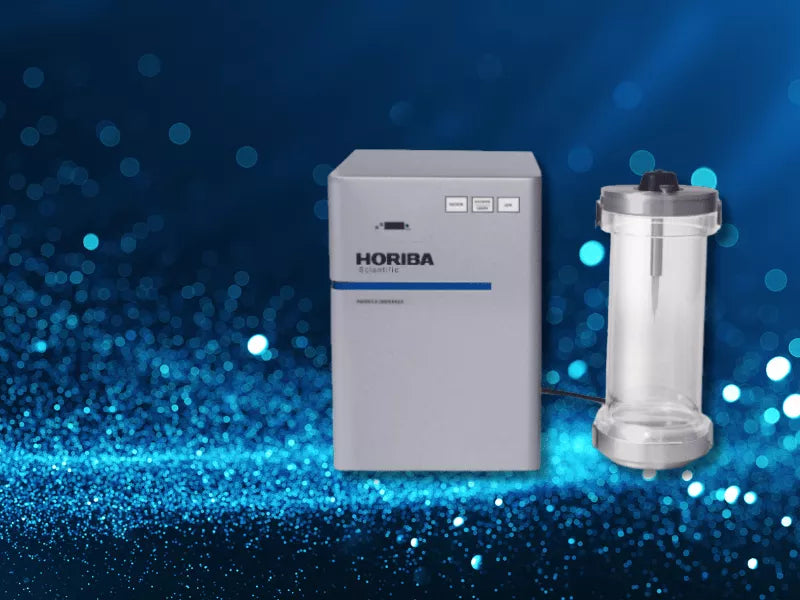Learn more about particle dispersion principles and applications
We understand the importance of particle dispersion in your analytical and production processes. Whether you're working with dry powders or granular materials, correct particle dispersion is essential to ensure accurate measurements and reliable results. We will now explore how particle dispersion works, its various applications and why it is fundamental to your business.
Understanding Particle Dispersion
What is Particle Dispersion?
Particle dispersion involves separating individual particles from each other in a sample of dry powder or granular material. This process is crucial to avoid agglomeration, where particles clump together, which can distort analysis results and affect the performance of your HORIBA instrument.
Dispersion methods
There are several methods for dispersing particles, each adapted to specific types of materials and applications:
- Mechanical Dispersion: Uses mechanical forces to separate particles. This can include grinding, sieving or the use of high-energy mixers.
- Ultrasonic Dispersion: Uses ultrasonic waves to break up particle agglomerates.
- Pneumatic Dispersion: Uses a flow of air to disperse particles, often used for very fine dry powders.
- Wet dispersion: involves suspending particles in a liquid to facilitate their separation. This is commonly used for granular materials and coarser powders.
Particle Dispersion Applications
Pharmaceutical industry
In drug production, correct particle dispersion is essential to guarantee formulation homogeneity. Particles must be uniformly dispersed to ensure even distribution of the active ingredients in each dose, which has a direct impact on drug efficacy and safety.
Paints and Coatings Industry
For paints, varnishes and other coatings, the dispersion of pigments and additives is crucial to achieve uniform color, smooth texture and optimum coverage properties. Proper dispersion avoids defects such as streaks or stains in the final product.
Food industry
In the food industry, the dispersion of additive powders, spices and other ingredients is essential to ensure consistent flavor and texture. For example, in the manufacture of powdered beverages, good dispersion ensures that each portion prepared has the same taste and consistency.
Building Materials
In the production of building materials such as cement, powder additives need to be dispersed evenly to improve the properties of the final product, such as strength and durability. This also helps to avoid weak points in finished structures.
Advantages of Particle Dispersion
Accurate and reliable analysis
Proper particle dispersion is essential for accurate particle size analysis. It enables correct characterization of particle size and distribution, which is crucial for quality control and product development.
Improving product performance
In many cases, the performance of a product is directly linked to the homogeneous distribution of its constituent particles. Whether it's to ensure the uniform release of active ingredients in a drug, or to guarantee the strength of a building material, good dispersion is synonymous with better performance.
Manufacturing Process Optimization
Controlling particle dispersion helps to optimize manufacturing processes by reducing material losses and improving efficiency. This can translate into significant savings in terms of time and costs, while increasing the quality of the final product.
Conclusion
Particle dispersion of dry powders and granular materials is a crucial step in many industrial sectors. Understanding and mastering this process can significantly improve the accuracy of your analyses, the performance of your products and the efficiency of your manufacturing processes. At HORIBA, we are committed to providing you with the tools and knowledge you need to optimize particle dispersion in your specific applications.
To find out more about our dispersion solutions and how they can benefit your operations, please contact our team of experts. We're here to help you achieve your quality and performance objectives.
Discover how to made easy powder dispersion with our XD-100 accessory


